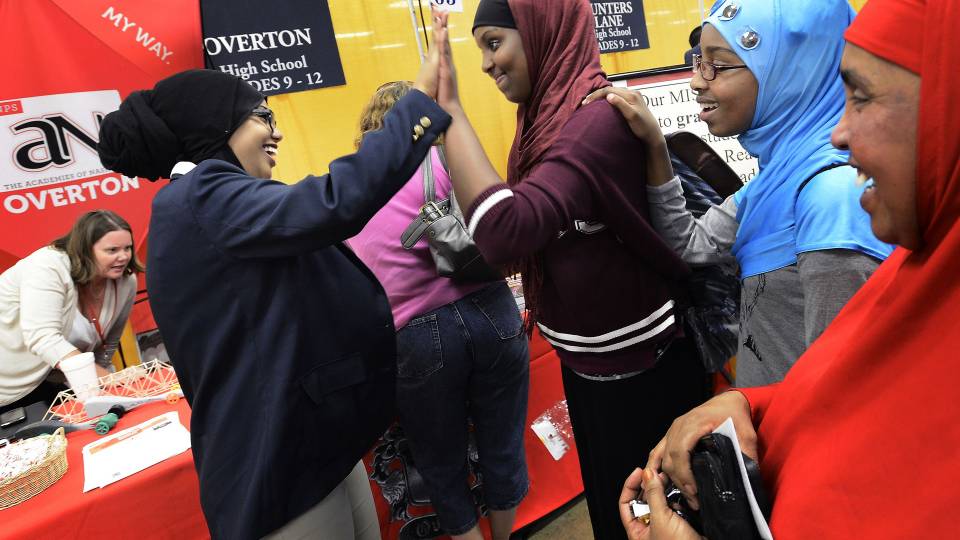The poll focused on education, and that one finding suggests that, despite years of education reforms, states have a long way to go to succeed in the dawning new-majority era. One of the places to start, judging by responses in the poll, is figuring out how to better fund schools in communities that don’t have the tax base of middle-class suburbia.
“The quality is not the same due to less funding,” a Latino parent said of schools serving primarily students of color, during a Chicago focus group tied to the poll. The parent said the money gap means “less teachers, less technology available … and less overall academic opportunities.”
And opportunity is the goal for these new-majority parents. Judging by the poll and focus-group responses, they want their kids held to rigorous standards and expectations, and they’re ready to do their part to prod their children forward. They just want schools to be up to the task at hand.
“Will states and school districts rise to the occasion and build a K-12 public education system designed to address the educational needs of students of color? Or will they shirk their duty … and condemn a majority of public school students to a future with little to no promise?” asks Wade Henderson, president and CEO of The Leadership Conference Education Fund, in a report on the poll results.
What parents see
Mr. Henderson’s group is the research and education arm of a large civil rights coalition, and sponsored the new poll for a report titled, “New Education Majority: Attitudes and Aspirations of Parents and Families of Color.” The survey included 400 black and 400 Latino parents and guardians of school-age children, interviewed by phone in March by the polling firm Anzalone Liszt Grove Research (ALG).
More than three-quarters in the poll said schools in low-income communities – often those with many African-American or Latino residents – receive less funding than schools in wealthy communities. Parents who believed there are racial disparities in the quality of education attributed it primarily to this lack of funding. The next two factors they pointed to: lower teacher quality and overall racial bias.
“I’ve seen it so many times before. They don’t offer to black schools what they offer to white schools,” an African-American parent told a focus group in Philadelphia.
In all, 6 in 10 Latinos and 8 in 10 African-Americans in the survey said schools serving their group receive less than schools in white communities.
The vast majority also believed students should be challenged more and that low-income students should be held to the same or higher expectations, because of the importance of education as a path out of poverty or limited opportunities.
The call for better schools and greater equity comes at an important moment in national education policy. States are working to refine their school accountability systems within the parameters of the new federal education law known as the Every Student Succeeds Act. The law replaced the law known as “No Child Left Behind,” giving states greater flexibility in how to ensure strong schools.
As is often the case with polls of parents, more than 8 out of 10 said the school their children attend is good or excellent. But even within this question, the backdrop of racial equity lurked. Among African-Americans whose child attended a school that is mostly white, 94 percent rated the school highly, compared with 75 percent of those whose school was mostly black.
When asked an open-ended question about what factor is most important to make a great school, half cited good teachers.
Read the rest: csmonitor.com






















